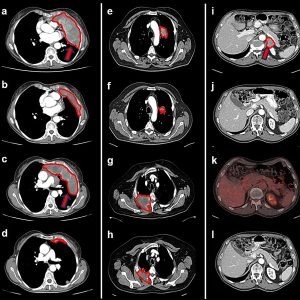
Artificial intelligence (AI)-based risk classification improves prognostication with localized prostate cancer, according to a study published online Oct. 24 in JCO Precision Oncology.
Jonathan David Tward, M.D., Ph.D., from the University of Utah in Salt Lake City, and colleagues developed a clinically usable risk grouping system using multimodal AI (MMAI) models to risk-stratify localized prostate cancer. The analysis included 9,787 patients with localized prostate cancer from eight phase 3 trials treated with radiation therapy, androgen deprivation therapy, and/or chemotherapy followed for a median 7.9 years.
The researchers found that according to National Comprehensive Cancer Network (NCCN) risk categories, 30.4% of patients were low-risk, 25.5% intermediate-risk, and 44.1% high-risk. Based on MMAI risk classification, 43.5% of patients were low-risk, 34.6% intermediate-risk, and 21.8% high-risk, yielding reclassification of 1,039 patients (42.0 %).
The 10-year metastasis risks were comparable despite the MMAI low-risk group being larger than the NCCN low-risk group (1.7% for NCCN versus 3.2% for MMAI). For NCCN high-risk patients, the overall 10-year metastasis risk was 16.6%, with MMAI further stratifying this group into low-, intermediate-, and high-risk, with metastasis rates of 3.4, 8.2, and 26.3%, respectively.
“This approach aims to prevent both overtreatment and undertreatment in localized prostate cancer, facilitating shared decision-making,” the authors write.
Several authors disclosed ties to pharmaceutical and biotechnology companies.
More information:
Jonathan David Tward et al, Prostate Cancer Risk Stratification in NRG Oncology Phase III Randomized Trials Using Multimodal Deep Learning With Digital Histopathology, JCO Precision Oncology (2024). DOI: 10.1200/PO.24.00145
© 2024 HealthDay. All rights reserved.
Citation:
AI aids risk prediction classification for prostate cancer (2024, November 6)
retrieved 6 November 2024
from https://medicalxpress.com/news/2024-11-ai-aids-classification-prostate-cancer.html
This document is subject to copyright. Apart from any fair dealing for the purpose of private study or research, no
part may be reproduced without the written permission. The content is provided for information purposes only.








